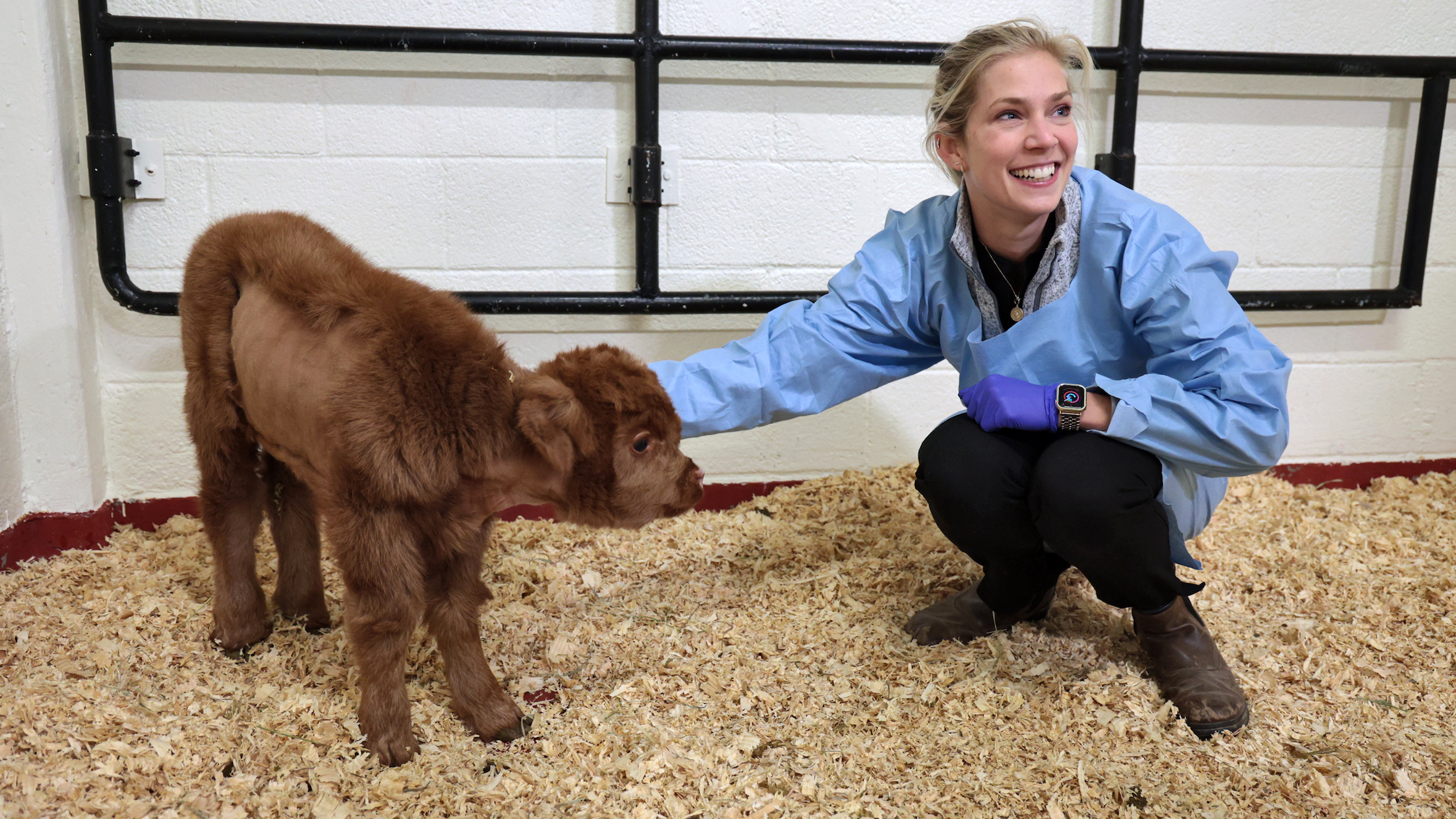Cyrano Resting After Surgery at NC State University
Cyrano, the cat who made history as the first feline with a true osseointegrated total knee replacement implant, is  resting comfortably in the Intensive Care Unit of the Randall B. Terry, Jr. Companion Animal Veterinary Medical Center at North Carolina State University.
resting comfortably in the Intensive Care Unit of the Randall B. Terry, Jr. Companion Animal Veterinary Medical Center at North Carolina State University.
Dr. Denis Marcellin-Little, professor of orthopedics at the NC State College of Veterinary Medicine, led a team that involved four other surgeons in a nearly six-hour operation yesterday (Jan. 26) that provided 10-year-old Cyrano with the first ever custom-made, osseointegrated feline prosthetic knee. As in human knee replacement, Cyrano’s state-of-the-art knee will provide a full range of natural motion unavailable in previous feline knee replacement surgeries.
The procedure culminated eight months of collaboration involving high tech 3-D computer design, unique component engineering, complex manufacturing, and technical surgery skills that required contributions from veterinarians and  engineers from around the U.S. and abroad. The minute size of the intricate components increased the complexity of the design, engineering, and fabrication of the knee joint and the components which extended into the live bone on both sides of the prosthetic knee.
engineers from around the U.S. and abroad. The minute size of the intricate components increased the complexity of the design, engineering, and fabrication of the knee joint and the components which extended into the live bone on both sides of the prosthetic knee.
Dr. Ola Harrysson, associate professor in the NC State College of Engineering and an industrial and systems engineer, led the team’s engineering effort and joined the medical team in the operating room as an observer.
Cyrano’s Project Team
“Although total knee replacements in dogs are increasingly common, a cat poses some additional challenges, particularly regarding the size of the implant,” Dr. Marcellin-Little said prior to the surgery. “Additionally, Cyrano’s existing leg bones were weakened by the cancer, so we must take care to be sure that the implant does not place undue stress on the remaining bone.”
Cyrano was treated for bone cancer last year and is now in total remission. The disease and treatment weakened the bone in his affected back leg, however, and Cyrano’s knee deteriorated as a result. His owner, Sandy Lerner, felt that amputation would negatively affect Cyrano’s quality of life, and her search for other options brought them both to NC State and the team of Drs. Marcellin-Little and Harrysson.
The two collaborators are pioneers in osseointegration, a process that fuses a prosthetic limb with an animal’s (or human’s) bones. Osseointegration creates a strong, permanent bond between living bone and the titanium implant, which is anchored into the bone—similar to the way an artificial tooth is anchored into the jaw. The individually designed prosthesis is then attached to the tip of the implant.
The implant and prosthesis are designed and created using rapid prototyping technology that can create a perfectly replicated three-dimensional model of the animal’s limb. Surgeons then use the model to practice the procedure, making minute adjustments to ensure a perfect fit before the surgery. The actual implant and prosthesis are then created to match specifications of that specific patient.
NC State, with a college of engineering and college of veterinary medicine, can design, manufacture, and surgically implant custom prosthetics for veterinary patients.
Scans taken after Cyrano’s surgery show the custom-made, osseointegrated feline prosthetic knee implanted in Cyrano’s leg. Note extension into the live bone on either side of the prosthetic knee.
In the osseointegrated procedure, the live bone continues to grow into the implant. This allows the prosthesis and bone to become a single, solid unit. Human medicine is interested in the technique and its application for people who have lost limbs to disease, accident, or combat.




